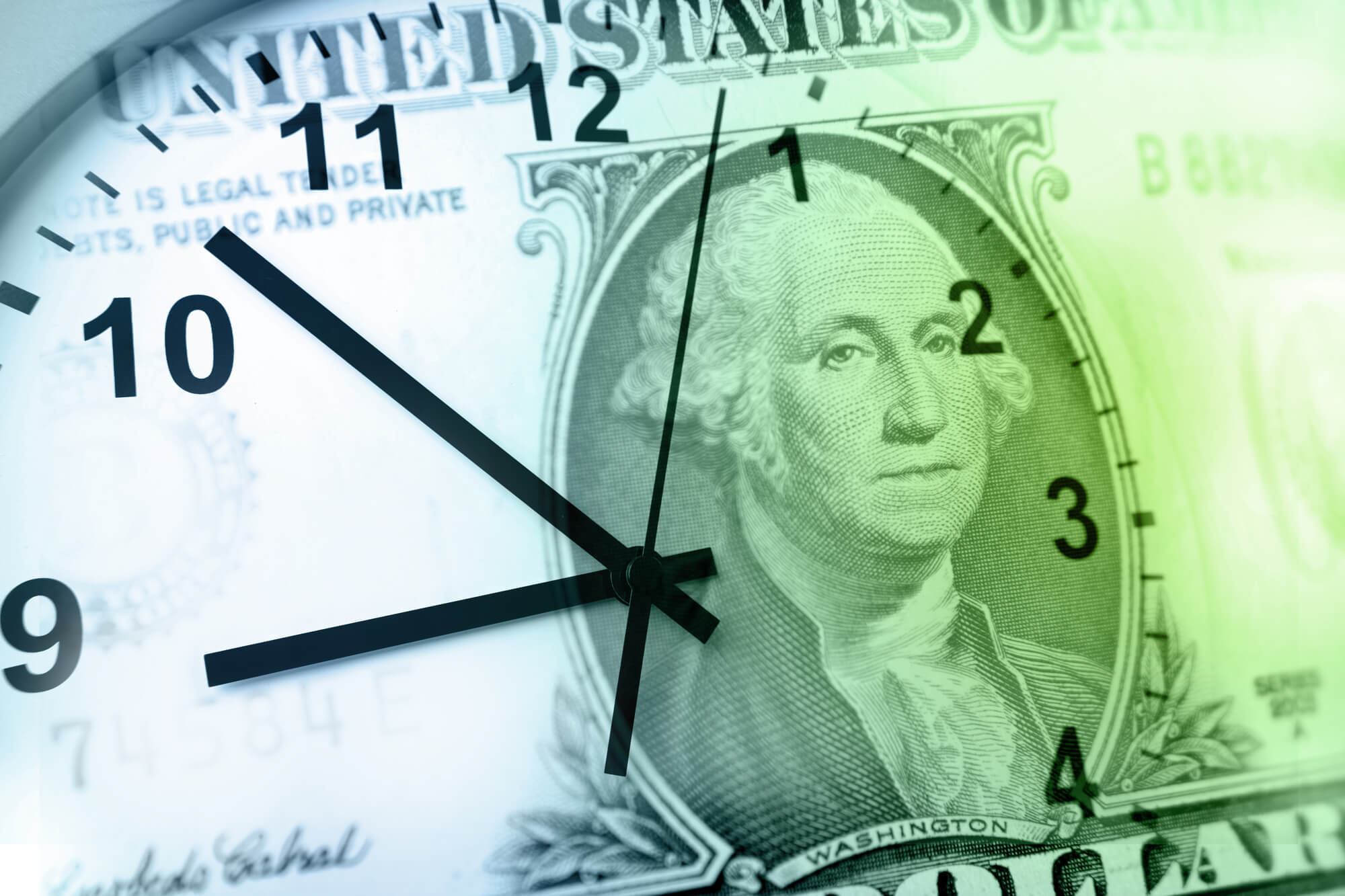There are many different ways to budget your money. Before determining which method to pursue, you’ll want to research how much time and maintenance a given budgeting system involves before you get on board.
The best budgeting methods from easiest to most difficult are as follows: 1) the ‘No’ Budget method (easiest), 2) the Pay-Yourself-First Budget, 3) Percentage-Based Budgets, 4) the Zero-Based Budget method, and 5) the Envelope System Budget (most difficult). If you’re new to budgeting, start with an easier budget first and scale to more advanced budgets over time.
If you’re new to budgeting or if your current system isn’t working for you, keep reading to find out which budgeting method is going to be best for you. We’ll weigh in on which budget is right for everyone, and how much of commitment you’ll need for each.
What is the Best Budget Method?
Before you roll your eyes and sigh, begin by taking a deep breath and saying it with me, ‘Budget‘.
Perfect.
Now say, ‘I can budget.’
…
Are you saying it? Really, give it a go. We’ll wait.
… *crickets*
Still having a bit of trouble? Well, you’re not alone. Many people in general don’t like to think about or even keep a budget. However, when it comes to your journey toward financial independence, it’s integral for you to sit down and think about your money. A budget is a great first step to doing so, because it’ll help you hone in on your current spending and give you an actionable plan for how to use your money.
It may be difficult to face the music, so try putting on some relaxing music and set aside an evening to dig in. But, to make this easier for you, we’ve put together a list of the most popular budgeting methods and rated them on a scale from easiest to most difficult. That chart follows.
| Budget Method | Intensity | Recommended For |
| ‘No’ Budget Method | Easiest | Anyone |
| Pay-Yourself-First Budget | Easy | Goal-Oriented Savers |
| Percentage-Based Budget (e.g. 50/30/20) | Average | Beginners |
| Zero-Based Budget | Difficult | Consistent Income Earners |
| Envelope System Budget | Most Difficult | Dedicated Budgeters |
Wherever you are with your personal finances, there’s a budget for you. If you don’t have an emergency fund, are riddled with debt, or don’t even have any savings, there’s a budget for you. Believe us, budgets are here to help. And in the long run, all you need is to begin and work at it for a few days, weeks, and eventually a few months. Once you get the hang of things, you’ll see how easy (and helpful) it is to budget.
Not only that, budgeting will help you all the way up your financial mountain. A mountaineer doesn’t just coast up a gigantic mountain. She carefully sits down to ‘count the cost’ beforehand. What gear does she need? What provisions are required? Where are the checkpoints and rest stops? Such planning can be life saving. And financially speaking, so can budgets.
If you’re new to budgeting, try out the ‘No’ Budget Method. It’s the easiest budget and is for anyone and everyone. For those who know they need to get started with a budget, this is a quick way to begin. The Pay-Yourself-First Budget is a great budget for those looking to handle a major portion of their finances. Like paying down debt or saving up for a major expense or retirement, for example. Percentage-Based Budgets are also a great budget to graduate to if you’re looking to begin ramping things up. These kinds of budgets begin tracking a few basic categories, but break down your spend into percentages instead of meticulous dollar amounts, so it’s easier than traditional budgeting.
For more dedicated budgeters, or those who need more financial discipline, the Zero-Based Budget or Envelope System Budget may be right for you. These budgets help you carefully track your expenses, and allow you to preallocate your money beforehand so you don’t overspend in any one category.
We’ll weigh in on each budgeting method in more detail below. But remember, when it comes to your finances, it pays to budget so that you can know your spending, plan your savings, and reach financial independence sooner.
So if you’re ready, let’s climb.
1. ‘No’ Budget Method
| Budget Method | Intensity | Recommended For |
| ‘No’ Budget Method | Easiest | Anyone |
The ‘No’ Budgeting Method is a budget without all of the details. While it’s tempting to believe it’s as simple as ‘not having a budget’ at all, it still has the basic structure of a budget: you can’t spend more money than the budget you set. However, your budget is your set income for the month. Instead of specifically categorizing your money into particular buckets, you have one, large bucket – your monthly income.
The idea behind the ‘No’ Budget Method is to wrangle in your monthly spending. That is, you’re not spending more money than you have available. Since it’s based off of your monthly income, it’s already set for you. You just need to curb your spending to align with your income.
This budget is best for anyone who is looking to begin budgeting. It’s the easiest type of budget to start out with because anyone with any sort of income can participate. Even children can begin building basic financial habits with the ‘No’ Budget Method if they have a form of allowance, or receive any form of ‘compensation’ for chores, housework, or other jobs. They can learn to save up for larger purchases if they don’t have the money for what they want immediately, or learn to spend the money they do have.
‘No’ Budgets are best when beginning to learn how to live within your means, since the premise is simply to not spend more money than you have available. If you are prone to making purchases on credit, begin using a debit card instead. That way, the money in your checking account will be where your money comes in and where it goes out. You won’t be able to spend more than you have available in your account, which will help you stay away from accumulating debt.
2. Pay-Yourself-First Budget
| Budget Method | Intensity | Recommended For |
| Pay-Yourself-First Budget | Easy | Goal-Oriented Savers |
The Pay-Yourself-First Budget is sometimes also known as a ‘Reverse’ Budget. The premise is simple like the ‘No’ Budget Method in that it’s all about nomenclature: you pay yourself first. Meaning, you take your income for the month and dedicate it to a particular goal or purpose first, and then spend everything else afterward.
A step beyond the ‘No’ Budget Method, the Pay-Yourself-First Budget is designed to help you begin focusing your spending towards a particular category or goal.
The Pay-Yourself-First Budget is best for individuals who have specific saving or spending goals they need to target. For example, if you have a particular debt payment you want to focus on, simply take your set amount out of your monthly income and dedicate it to that goal or expense.
To illustrate this example, let’s say you saved up your emergency fund and wanted to begin paying down student debt. You could ‘pay yourself’ first and allocate $500/month towards paying it down. If you had $30,000 in student loan debt and put $500 towards it each month, it would take you 60 months, or 5 years to pay it off. Focusing on your goal first ensures you have enough money to pay down your debts before spending on your bills or other wants/needs. It can be tricky to find the money at the end of the month to make payments like these, so setting aside the money first keeps you focused on your goal.
Once you are debt-free, you can continue using this budget method as a savings vehicle to begin saving for large goals like a house and retirement. Since you’ve already gotten into the habit of paying yourself first, you can pay your future self and begin accumulating wealth through saving and investing for your future.
Additionally, there are also several Pay-Yourself-First Percentage Budgets for those looking to scale their budgets beyond their original savings goals. If you’re looking to break into a new budget style, check out the 80/20 or 70/20/10 budgets.
3. Percentage-Based Budget
| Budget Method | Intensity | Recommended For |
| Percentage Based Budget (e.g.50/30/20) | Average | Beginners |
Once you’ve learned to live within your means from the ‘No’ Budget Method and have learned the basics of saving from the Pay-Yourself-First Budget, you may be ready for something new. Enter, the Percentage-Based Budget.
The Percentage-Based Budget is a simple budget that can help you learn to categorize your expenses. Instead of meticulous categorization, however, you generally have 2-4 large buckets instead. They typically consist of one major large bucket that’s focused on your necessities. And the other buckets are typically breakout buckets for your wants and needs.
Percentage-Based budgets are easy to use because you only need to determine the percentage of your overall spend for a certain bucket or category. One of the most popular Percentage-Based Budgets is the 50/30/20 budget, where you spend 50% of your monthly income on necessities, 30% on wants, and 20% on savings.
The upside to Percentage-Based Budgets is that you can customize them for your particular circumstances. A 60/20/20 and 50/30/20 Budget can be a great place to start for individuals who are prone to spending more money than they should. A 30/30/30/10 Budget is helpful when trying to manage one major monthly expense, like housing. And an 80/20 or 70/20/10 Budget can be helpful for those who don’t have a lot to spend or haven’t been good at saving historically. You can also break out your budget into percentages that work better for you!
To learn which Percentage-Based Budget is best for you, check out our guide here.
4. Zero-Based Budget
| Budget Method | Intensity | Recommended For |
| Zero-Based Budget | Moderate to Difficult | Consistent Income Earners |
More than simply bucketing your expenses into a few major categories, Zero-Based Budgets take things to another level when it comes to categorizing your expenses. Every dollar has a home, and your expenses are thought out beforehand so they don’t catch you by surprise.
Zero-Based Budgets are best for those who have budgeted before, either traditionally or with another budget method. They are also best for those who can depend on a set income amount each month. Those with variable income amounts from month to month should choose another budgeting method.
A Zero-Based budget allocates each dollar to a particular expense, so that the total amount of money in equals the total amount of money out – meaning you have $0 left at the end of the month. If you’ve developed strong savings habits from either the Pay-Yourself-First or Percentage-Based Budgets, you would allocate a specific dollar amount for savings here as well.
For example, if you had $4,000 of monthly income, your total expenditures would also equal $4,000 by the end of the month. The amount of money you have left over at the end of the month would equal exactly $0, hence the name of the Zero-Based Budget.
| Income | Amount |
| Job income | $4,000 |
| Total | $4,000 |
| Expenses | Amount |
| Housing | $1,600 |
| Transportation | $450 |
| Groceries | $650 |
| Savings | $600 |
| Insurance | $200 |
| Entertainment | $100 |
| Clothing | $100 |
| Health/Wellness | $100 |
| Miscellaneous | $200 |
| Total | $4,000 |
| Leftover Money | $0 |
5. Envelope System Budget
| Budget Method | Intensity | Recommended For |
| Envelope System Budget | Most Difficult | Dedicated Budgeters |
Last but not least, there’s the Envelope System Budget method. This is nearly identical to the Zero-Based Budget method, but with a peculiarity of its own. It’s designed specifically to be used with only cash.
Just like the Zero-Based Budget method, you plan out all of your monthly expenses in advanced. But then, you’ll take it one step further. You write out all of your budget categories by name onto envelopes. One envelope is one budget category. For example, Envelope 1: housing. Envelope 2: transportation. Envelope 3, and so on.
The Envelope System Budget is best for dedicated budgeters who know how to budget. The amount of time it takes to put together this budget and to maintain it is considerable – especially when compared to the ease of spending with plastic – but it’s also foolproof. You can’t overspend in a given month, because once the money in the envelopes is gone, it’s gone.
If you need to spend more in a certain category for a given month, you can pull from another envelope. However, doing so will make you consciously think through what you’re going to spend less on for that particular month (since you’re pulling it from a different envelope).
This method will make you think twice about how you spend your money. It also allows you one advantage that all the others don’t: you are physically handling your money. Meaning, you are literally watching it leave your own hands each month. This method is a great way to make spending tangible, enabling you to better keep it in check.
The Bottom Line
Any of the above budgets can work for you. It simply takes some effort, proper goals, and the desire to climb your way to financial independence. Making a budget work may not be easy, and you may slip out of the habit at times, but you can always automate your budget if you’re struggling. There are many applications or programs available to you for help. If you’re old fashioned, you can always set up a spreadsheet or use a pen and some paper as well.
Whatever the case, we know you can do it. Financial independence is within your grasp, and we’ll be there alongside you as you reach toward it.
Climb on, FinBase.









